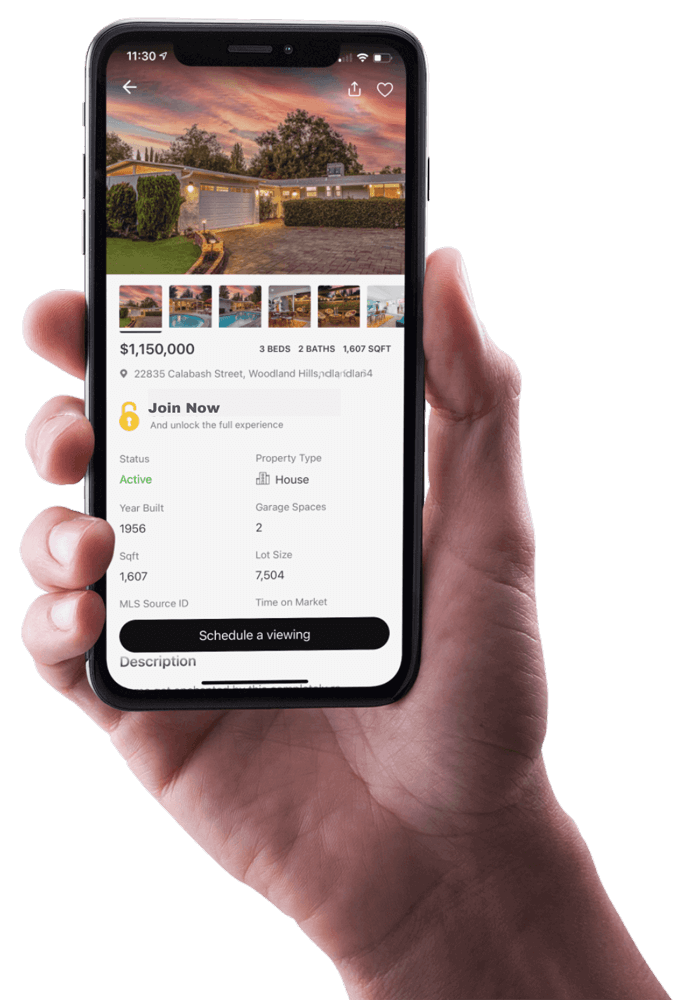How Plumbing Conditions Influence Property Value and Buyer Confidence
Plumbing systems play a key role in home inspections, buyer confidence, and long-term property value. Learn how infrastructure impacts real estate decisions.

In a recent update, Zillow has downgraded its housing market forecast for home values and sales, reflecting a notable shift in the real estate landscape. This article delves into the details of Zillow's latest projections, the factors influencing these changes, and the implications for buyers and sellers in the current market.
Zillow has recently updated its housing market forecast, signaling shifts in home values and sales for the upcoming year. The company now anticipates a modest increase in home values of 1.8% for 2024, a decrease from the previous estimate of 2%. This change reflects broader trends in the market, including a significant rise in homes for sale compared to buyer demand. Zillow predicts around 4.1 million home sales this year, which represents only a slight increase over last year. However, this estimate is still lower than earlier projections, highlighting ongoing challenges in the housing market. As we explore this forecast, it's essential to consider how these trends might impact both buyers and sellers in the coming months.
Zillow has recently adjusted its home value predictions, now forecasting a modest increase of 1.8% for 2024. This marks a decrease from the previous estimate of 2%. Such adjustments highlight the ongoing challenges in the housing market, particularly as homes for sale continue to outpace buyer demand. This year, Zillow anticipates around 4.1 million home sales, reflecting only a slight 1% increase compared to last year, which was one of the lowest sales years since 1995.
The forecast indicates that if sales reach 4.1 million, it would represent a 23% drop compared to 2019 levels. Additionally, the median number of home sales since 1989 stands at 5.3 million, suggesting that current sales are significantly below historical averages. In specific markets, predictions vary widely: for instance, Austin, Texas, is expected to see a decrease of 2.1% in home values, while Boise, Idaho, anticipates a modest gain of 1.2%.
These changes reflect a market grappling with higher inventory levels and declining buyer activity. As we move forward, it will be crucial to monitor how these trends develop in the context of changing economic conditions.
Zillow's revised forecast presents an intriguing contrast to other industry predictions. For instance, Fannie Mae projects a significant increase in home values of 6.1% for this year, while Zillow anticipates a much more modest rise of only 1.8%. This disparity highlights the varying expectations among analysts regarding the housing market's recovery.
Moreover, both Zillow and Fannie Mae predict around 4.1 million home sales for the year, which indicates a consensus regarding the overall sales volume. However, Zillow's forecast represents a slight decline from its previous estimate of 4.2 million sales. This is notable, especially considering that last year's sales were at a near 28-year low.
When comparing current forecasts to historical data, it's evident that if Zillow's projections hold true, it would mark the fewest sales since 2008. The median sales volume since 1989 stands at 5.3 million, making the anticipated figures even more striking. A 23% drop in sales compared to 2019 levels underscores the current challenges faced in the market.
Regional forecasts also differ. For example, Zillow predicts a 2.1% decline in home values in Austin, Texas, while Boise, Idaho, is expected to see a 1.2% increase. These differences reflect localized market conditions influenced by supply and demand dynamics.
In conclusion, while Zillow's forecast aligns with some industry predictions, the overall outlook remains cautious, emphasizing the complexities of the current housing market.
The current housing market shows a significant decline in sales when compared to historical data. If Zillow's projections hold true, the anticipated number of home sales this year would be the lowest since 2008. Specifically, a forecast of 4.1 million sales represents a staggering 23% drop compared to 2019 levels. Furthermore, the median number of home sales since 1989 is 5.3 million, highlighting how far current sales figures are from historical norms.
Looking back, the housing market has experienced various fluctuations influenced by economic conditions, interest rates, and buyer demand. For instance, in 1995, home sales reached approximately 3.84 million, a figure that now appears alarmingly low given the population growth in the United States since then. The current forecast indicates that we may see fewer than 4 million sales this year, which would mark a significant downturn from previous decades.
Economic factors play a crucial role in shaping the housing market. With rising interest rates and inflation concerns, potential buyers are facing challenges that impact their purchasing power. Over the years, these economic shifts have led to varying sales volumes, but the current landscape is particularly concerning. The ongoing imbalance between supply and demand, with inventory rising while sales decline, suggests that the market is struggling to recover.
As we navigate this uncertain period, it's essential to consider how these historical trends inform our understanding of the current housing market. The data not only provides context but also serves as a crucial reminder of the cyclical nature of real estate, where periods of growth can swiftly transition into downturns.
The current housing market is characterized by a notable imbalance between supply and demand. Recent data indicates that while new listings are on the rise, pending home sales are experiencing a decline. This trend reflects a significant shift in buyer behavior and market conditions. Specifically, new listings have increased by 3%, yet pending home sales have fallen by 6.9% year-over-year. This disparity highlights a growing gap between the number of homes available and the actual demand from buyers.
As of July, the inventory of homes for sale has surged by approximately 25% compared to the previous year. This surge in supply can be attributed to various factors, including homeowners opting to sell as they perceive a favorable market. However, the influx of new listings has not translated into increased sales, leading to a build-up of inventory. The current inventory levels are among the highest seen in recent years, which could put downward pressure on home prices.
On the demand side, the situation appears less optimistic. Pending home sales are currently at a three-year low, indicating that fewer buyers are entering the market. This decline in buyer activity coincides with rising mortgage rates and economic uncertainties, which are making potential buyers cautious. If this trend continues, the overall sales volume is likely to remain low, potentially resulting in a stagnant market.
The imbalance between the rising supply and declining demand could lead to price reductions in many markets. In fact, the share of price reductions has reached 6.8%, the highest level since 2021. This trend suggests that sellers may need to adjust their expectations and pricing strategies to attract buyers. As inventory continues to grow, it may become increasingly challenging for sellers to maintain current price levels.
As we move forward, the dynamics of supply and demand will be critical in shaping the housing market. If demand picks up, possibly driven by decreasing mortgage rates, we could see a more balanced market. However, if supply continues to outpace demand, we may witness further declines in home prices. Monitoring these trends will be essential for both buyers and sellers as they navigate this evolving landscape.
The future of the housing market is closely tied to inflation and interest rates. Recent trends suggest that as inflation eases, we may see more favorable mortgage rates, which could encourage potential buyers. Lower rates generally improve affordability, making it easier for families to enter the market. This change could stimulate housing activity, leading to an increase in both new listings and home sales.
Inflation rates have been a significant concern for the economy. As inflation decreases, it can lead to lower interest rates, which in turn makes borrowing more affordable for homebuyers. This shift could potentially draw many buyers off the sidelines, eager to take advantage of better financing options. However, the timing and extent of these changes will greatly depend on economic indicators, particularly the core Personal Consumption Expenditures (PCE) index.
Interest rates play a crucial role in shaping buyer demand. If rates decline, it is expected that the demand for homes will increase substantially. Many prospective buyers are currently waiting for rates to drop before making their move. Should this happen, the influx of buyers could outpace the rise in new listings, creating a more competitive market. This scenario would likely lead to upward pressure on home prices.
Looking ahead, Zillow projects a modest increase in home values, estimating a 2% rise year-over-year by the end of this year. By July 2025, they anticipate a 9% increase compared to July 2024. However, this forecast varies significantly by region. For example, some areas like Austin, Texas, may see declines due to oversupply, while others, like Hartford, Connecticut, could experience gains due to limited inventory.
In conclusion, the interplay between inflation, interest rates, and housing supply will be critical in determining the future of the housing market. Monitoring these factors will be essential for buyers and sellers as they navigate this evolving landscape.
Zillow's latest forecast highlights significant regional differences in home value trends across the United States. For instance, Austin, Texas, is projected to experience a decline of 2.1% in home values through July 2025. This decrease is attributed to an oversupply of homes, which has outpaced buyer demand in the area.
Conversely, Boise, Idaho, is expected to see a modest increase of 1.2% in home values, reflecting a tighter inventory situation. Other regions, such as Dallas and Denver, face similar challenges, with predictions of a 3% and 1.1% decrease, respectively. These variations underscore the localized nature of real estate markets, influenced by specific supply and demand dynamics.
In contrast, Hartford, Connecticut, is forecasted to see a 2.4% increase in home values, driven by a lower inventory compared to previous years. Los Angeles and San Francisco also show differing trends, with expected gains of 1.4% and a significant decrease of 3.6%, respectively. These predictions illustrate the complexities within the housing market as it adapts to changing economic conditions.
In summary, the housing market is facing significant changes, as indicated by Zillow's latest forecast. With home sales projected to remain low and inventory levels high, it’s crucial for buyers and sellers to stay informed. If you're considering buying or selling, reach out for expert guidance tailored to your needs.
Access all your saved properties, searches, notes and more.
Access all your saved properties, searches, notes and more.
Enter your email address and we will send you a link to change your password.


Your trusted MLS search companion